Publications
2025
-
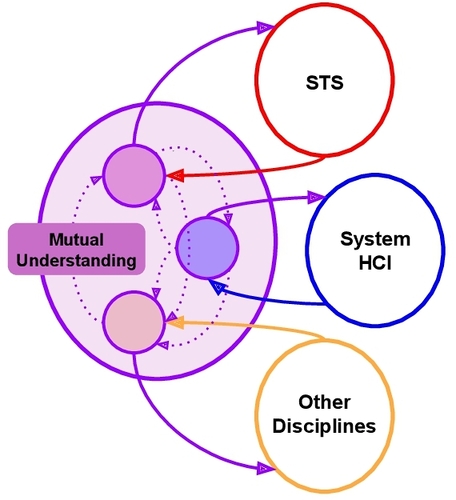 Towards Dialogic and On-Demand Metaphors for Interdisciplinary ReadingMatin Yarmand, Courtney N. Reed, Udayan Tandon, Eric B. Hekler, Nadir Weibel, and April Yi WangCHI: ACM Conference on Human Factors in Computing Systems
Towards Dialogic and On-Demand Metaphors for Interdisciplinary ReadingMatin Yarmand, Courtney N. Reed, Udayan Tandon, Eric B. Hekler, Nadir Weibel, and April Yi WangCHI: ACM Conference on Human Factors in Computing SystemsThe interdisciplinary field of Human-Computer Interaction (HCI) thrives on productive engagement with different domains, yet this engagement often breaks due to idiosyncratic writing styles and unfamiliar concepts. Inspired by the dialogic model of abstract metaphors, as well as the potential of Large Language Models (LLMs) to produce on-demand support, we investigate the use of metaphors to facilitate engagement between Science and Technology Studies (STS) and System HCI. Our reflective-style survey with early-career HCI researchers (N=48) reported that limited prior exposure to STS research can hinder perceived openness of the work, and ultimately interest in reading. The survey also revealed that metaphors enhance likelihood to continue reading STS papers, and alternative perspectives can build critical thinking skills to mitigate potential risks of LLM-generated metaphors. We lastly offer a specified model of metaphor exchange (within this generative context) that incorporates alternative perspectives to construct shared understanding in interdisciplinary engagement.
@article{yarmand2025towards, title={Towards Dialogic and On-Demand Metaphors for Interdisciplinary Reading}, author={Yarmand, Matin and Reed, Courtney N and Tandon, Udayan and Hekler, Eric B and Weibel, Nadir and Wang, April Yi}, journal={Proceedings of the 2025 CHI Conference on Human Factors in Computing Systems}, pages={1–19}, year={2025} } -
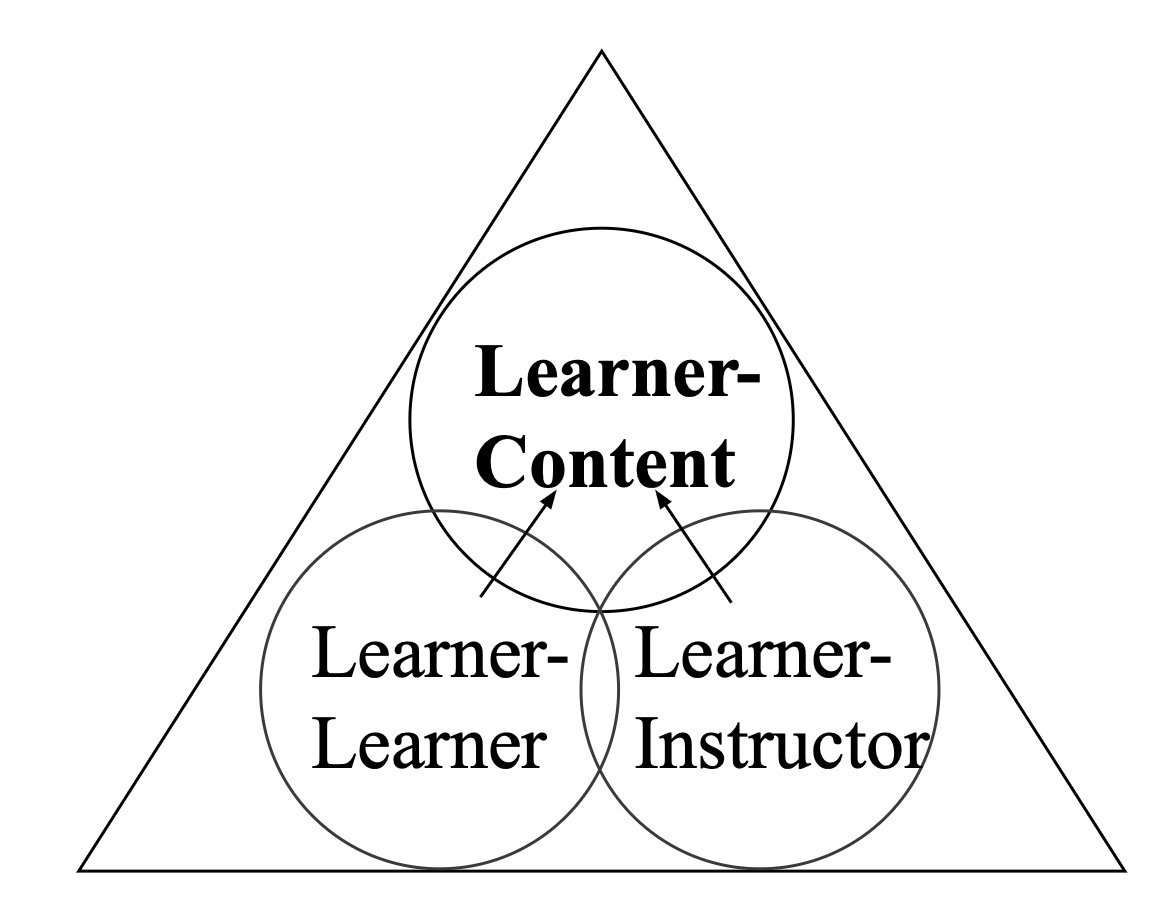 Interactions Beyond the Pandemic: Lessons Learned from Large-scale Emergency Remote Teaching in Higher EducationMatin Yarmand, Haowei Li, and Nadir WeibelCHI: ACM Conference on Human Factors in Computing Systems
Interactions Beyond the Pandemic: Lessons Learned from Large-scale Emergency Remote Teaching in Higher EducationMatin Yarmand, Haowei Li, and Nadir WeibelCHI: ACM Conference on Human Factors in Computing SystemsOnline education — given the enhanced access for diverse populations and flexible participation — has been a topic of interest for many computer science and learning science researchers. The sudden shift to online settings during the COVID-19 Emergency Remote Teaching (ERT) provided a valuable opportunity to examine the use of educational technologies on a global scale with various digital readiness skills, beyond many past works that relied on small lab studies. Following a PRISMA-inspired methodology grounded on Moore’s three types of classroom interaction, this descriptive review investigates 22 empirical research papers published during the COVID-19 ERT era focused on higher-education online classrooms. We explore the empirical evidence reported in the collected corpus, and given how ERT remains a likely future occurrence, we suggest key directions for future research, including a new learning paradigm that centralizes and augments Learner-Content interaction to balance between flexibility and structure of online learning.
@article{yarmand2025interactions, title={Interactions Beyond the Pandemic: Lessons Learned from Large-scale Emergency Remote Teaching in Higher Education}, author={Yarmand, Matin and Li, Haowei and Weibel, Nadir}, year={2025}, publisher={Association for Computing Machinery} } - Evaluating an Interactive Online Contouring Education Platform for Radiation Oncology Residents: Results of an International Longitudinal Randomized Controlled TrialMegan Orr, Matin Yarmand, Borui Wang, Kristin Daniels, Elizabeth Duran, Laura D’Souza, Nadir Weibel, Erin Gillespie, James Murphy, and Michael ShererIJROBP: International Journal of Radiation Oncology, Biology, and Physics
Variability in contouring practices can negatively impact patient outcomes. Traditional residency education relies on an apprenticeship model and published guidelines, which may lack accessibility, standardization, and personalized feedback. We hypothesized that iContour, an interactive online educational platform, would improve contouring accuracy among radiation oncology residents over the course of a clinical rotation.
@article{orr2025evaluating, title={Evaluating an Interactive Online Contouring Education Platform for Radiation Oncology Residents: Results of an International Longitudinal Randomized Controlled Trial}, author={Orr, ME and Yarmand, M and Wang, B and Daniels, K and Duran, E and D’Souza, L and Weibel, N and Gillespie, E and Murphy, J and Sherer, M}, journal={International Journal of Radiation Oncology, Biology, Physics}, volume={123}, number={1}, pages={S183–S184}, year={2025}, publisher={Elsevier} } - A Real-Time, Interactive Platform for Personalized Contouring Education in Radiation Oncology: Insights from the iConTutor Pilot StudyMegan Orr, Matin Yarmand, Joyce Lu, Yunhao Luo, Kristin Daniels, Nadir Weibel, Erin Gillespie, James Murphy, and Michael ShererIJROBP: International Journal of Radiation Oncology, Biology, and Physics
Effective contouring education is essential in radiation oncology residency training, as contouring variability has been linked to negative patient outcomes. Teaching this skill requires expert feedback, but traditional approaches often result in inconsistent instruction that may not be tailored to individual resident experience, contouring patterns, or knowledge gaps. To address this need, we developed iConTutor, an interactive software designed to provide real-time, personalized coaching for radiation oncology residents. This study evaluates the feasibility and educational impact of iConTutor in a pilot implementation at a single institution.
@article{orr2025real, title={A Real-Time, Interactive Platform for Personalized Contouring Education in Radiation Oncology: Insights from the iConTutor Pilot Study}, author={Orr, Megan E and Yarmand, Matin and Lu, Joyce and Luo, Yunhao and Daniels, Kristin H and Weibel, Nadir and Gillespie, Erin and Murphy, James and Sherer, Michael V}, journal={International Journal of Radiation Oncology, Biology, Physics}, volume={123}, number={1}, pages={e6–e7}, year={2025}, publisher={Elsevier} } - Evaluating and Optimizing Coaching Methodologies for Fleet Safety and Performance: An Evidence-Based Analysis of Differentiation and Optimization OpportunitiesNadir Weibel, Matin Yarmand, Cole Biehle, Elysia Mac, Huimeng Lu, and Vivian XiangeScholarship: Open Access Publications from the University of California
This report critically evaluates coaching methodologies for enhancing fleet driver safety, engagement, and overall organizational performance. Drawing on empirical research across education, behavioral science, and fleet management, this analysis identifies key dimensions of effective commercial driver coaching, highlights significant limitations of current practices, and outlines strategic recommendations focused explicitly on differentiation and optimization. The findings emphasize the superior effectiveness of personalized, manager-led coaching methods, yet also show how manager-led coaching alone is challenging to implement at scale given the scarce availability of expert coaches. On the other hand, this report shows that in-cabin automated warning systems and self-coaching offer strengths in scalability and flexible learning. However, without integration with more personalized and interactive feedback, these approaches alone do not achieve the same long-term safety outcomes as when combined with human-led coaching elements. As such, this report recommends a mix of the three approaches for future optimization, especially focusing on (1) strategic integration of AI-driven platforms, and (2) complementing existing risk identification coaching programs with targeted positive reinforcement mechanisms and regular short-session, in-person coaching. Ultimately, the provided evidence-based recommendations offer a potential pathway for achieving measurable improvements in driver safety outcomes, operational efficiency, and competitive differentiation.
@article{weibel2025evaluating, title={Evaluating and Optimizing Coaching Methodologies for Fleet Safety and Performance: An Evidence-Based Analysis of Differentiation and Optimization Opportunities}, author={Weibel, Nadir and Yarmand, Matin and Biehle, Cole and Mac, Elysia and Lu, Huimeng and Xiang, Vivian}, year={2025} }
2024
-
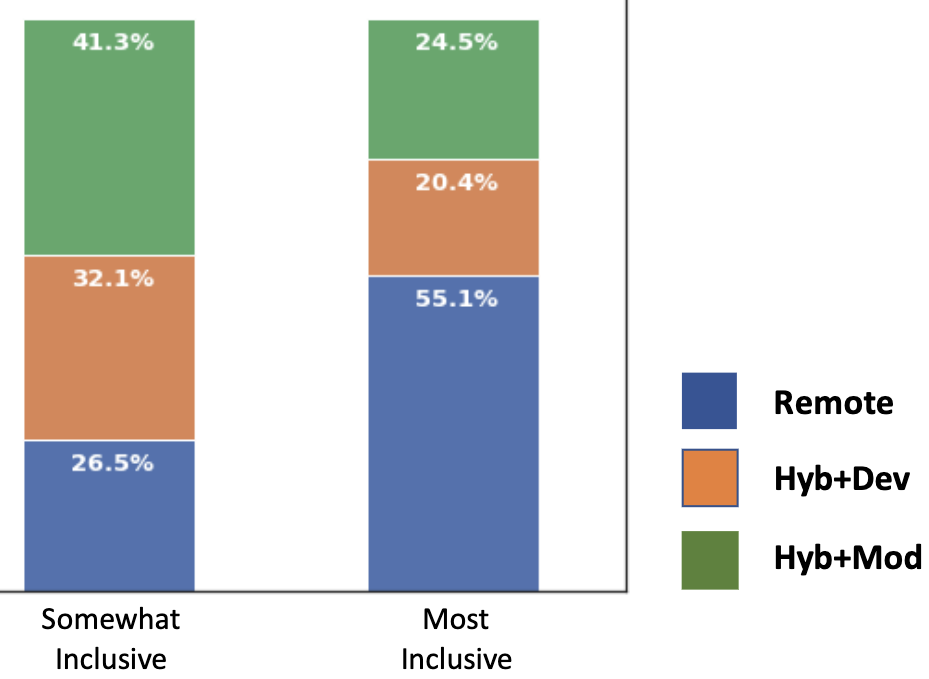 Format Matters: Comparing the Inclusiveness and Effectiveness of Hybrid and Remote MeetingsMatin Yarmand, Liana Kreamer, Siddharth Suri, and Sonia JaffeCSCW: ACM Conference on Computer-Supported Cooperative Work
Format Matters: Comparing the Inclusiveness and Effectiveness of Hybrid and Remote MeetingsMatin Yarmand, Liana Kreamer, Siddharth Suri, and Sonia JaffeCSCW: ACM Conference on Computer-Supported Cooperative WorkThe surge in remote and hybrid work has provided many benefits in terms of flexibility and autonomy, but it also presents challenges when it comes to team collaboration and meetings. Using a mixed-methods field study, we compare hybrid and remote meeting configurations to better understand how to improve the inclusiveness and effectiveness of these different meeting modalities. Our findings indicate that overall, fully-remote meetings are the most inclusive and effective. Fully-remote meetings are perceived as more inclusive of remote attendees despite their lower chat usage compared to hybrid meetings. We also find that people’s preferred format varies depending on the purpose or type of meeting and the skill set of the meeting moderator. We provide recommendations for improving meeting inclusion and effectiveness in both hybrid and remote meetings, such as training moderators and integrating chats with the main meeting.
@article{yarmand2024format, title={Format Matters: Comparing the Inclusiveness and Effectiveness of Hybrid and Remote Meetings}, author={Yarmand, Matin and Kreamer, Liana and Suri, Siddharth and Jaffe, Sonia}, journal={Proceedings of the ACM on Human-Computer Interaction}, volume={8}, number={CSCW2}, pages={1–23}, year={2024}, publisher={ACM New York, NY, USA} } -
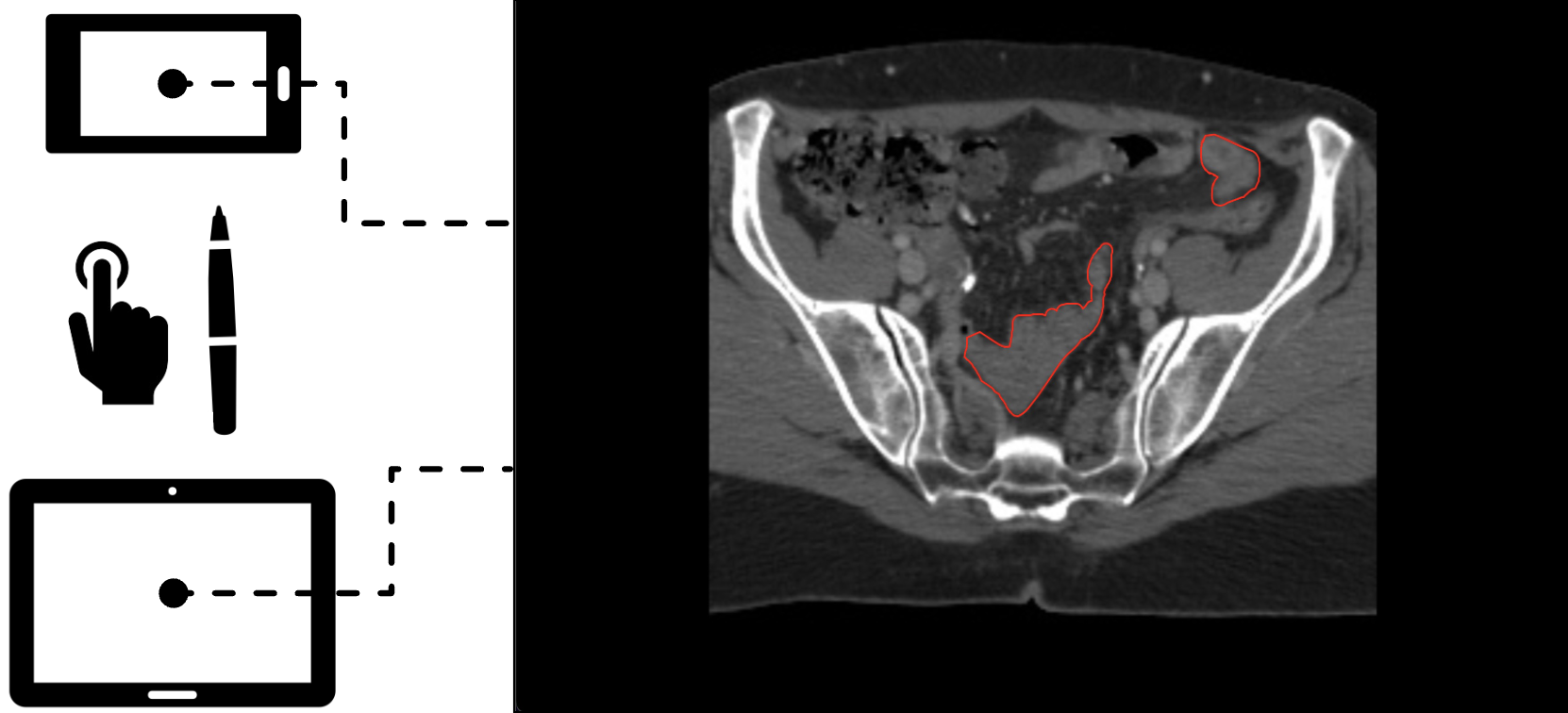 Enhancing Accuracy, Time Spent, and Ubiquity in Critical Healthcare Delineation via Cross-Device ContouringMatin Yarmand, Chen Chen, Michael V. Sherer, Yash N. Shah, Peter Liu, Borui Wang, Larry Hernandez, James D. Murphy, and Nadir WeibelDIS: ACM Conference on Designing Interactive Systems
Enhancing Accuracy, Time Spent, and Ubiquity in Critical Healthcare Delineation via Cross-Device ContouringMatin Yarmand, Chen Chen, Michael V. Sherer, Yash N. Shah, Peter Liu, Borui Wang, Larry Hernandez, James D. Murphy, and Nadir WeibelDIS: ACM Conference on Designing Interactive SystemsImproving accuracy, time spent, and ubiquity of delineation has been a long-standing design aim, yet many HCI works have overlooked high-stakes and complex healthcare annotation. We explore contouring, a critical workflow aimed at identifying and segmenting tumors, usually performed on immobile desktop computers in clinics, in which limited support for mobile access leads to prolonged and subpar treatment planning. Following interviews and think-aloud studies (N = 10 physicians), we report key contouring behaviors, and later design a novel cross-device prototype that enables contouring on everyday touch devices. We compared contouring via desktop and touch in a lab study (N = 8 residents) and found that mobile phones not only yielded similar accuracy, but also took significantly less time. Our results point to three broad design guidelines for cross-device solutions deployed within standalone healthcare workflows, and highlight how incorporating different device and input modalities can improve treatment delivery in today’s distributed healthcare environments.
@inproceedings{yarmand2024enhancing, title={Enhancing Accuracy, Time Spent, and Ubiquity in Critical Healthcare Delineation via Cross-Device Contouring}, author={Yarmand, Matin and Chen, Chen and Sherer, Michael V. and Shah, Yash N. and Liu, Peter and Wang, Borui and Hernandez, Larry and Murphy, James D. and Weibel, Nadir}, booktitle={Proceedings of the 2024 ACM Designing Interactive Systems Conference}, pages={905–919}, year={2024} } -
 "I’d be watching him contour till 10 o’clock at night": Understanding Tensions between Teaching Methods and Learning Needs in Healthcare ApprenticeshipMatin Yarmand, Chen Chen, Kexin Cheng, James Murphy, and Nadir WeibelCHI: ACM Conference on Human Factors in Computing Systems
"I’d be watching him contour till 10 o’clock at night": Understanding Tensions between Teaching Methods and Learning Needs in Healthcare ApprenticeshipMatin Yarmand, Chen Chen, Kexin Cheng, James Murphy, and Nadir WeibelCHI: ACM Conference on Human Factors in Computing SystemsBest of CHI: Honorable Mention (Top 5%)
Apprenticeship is the predominant method for transferring specialized medical skills, yet the inter-dynamics between faculty and residents, including methods of feedback exchange are under-explored. We specifically investigate contouring: outlining tumors in preparation for radiotherapy, a critical skill that when performed subpar, severely degrades patient survival. Interviews and design-thinking workshops (N = four faculty; six residents) revealed misalignment between teaching methods and residents who desired timely, relevant, and diverse feedback. We further discuss reasons: overlapping learning content and strategies to ease tensions between clinical and teaching duties, and lack of support for exchange of cognitive processes. The follow-up survey study (N = 67 practitioners from 31 countries), which contained annotation and sketching tasks, provided diverse perspective over effective feedback elements. We lastly present sociotechnical implications in supporting faculty’s teaching duties and learners’ cognitive models, such as systematically leveraging senior learners in providing case-based guidance and supporting double-sided flow of cognitive information via in-situ video snippets.
@inproceedings{yarmand2024d, title={I’d be watching him contour till 10 o’clock at night: Understanding Tensions between Teaching Methods and Learning Needs in Healthcare Apprenticeship}, author={Yarmand, Matin and Chen, Chen and Cheng, Kexin and Murphy, James and Weibel, Nadir}, booktitle={Proceedings of the 2024 CHI Conference on Human Factors in Computing Systems}, pages={1–19}, year={2024} } -
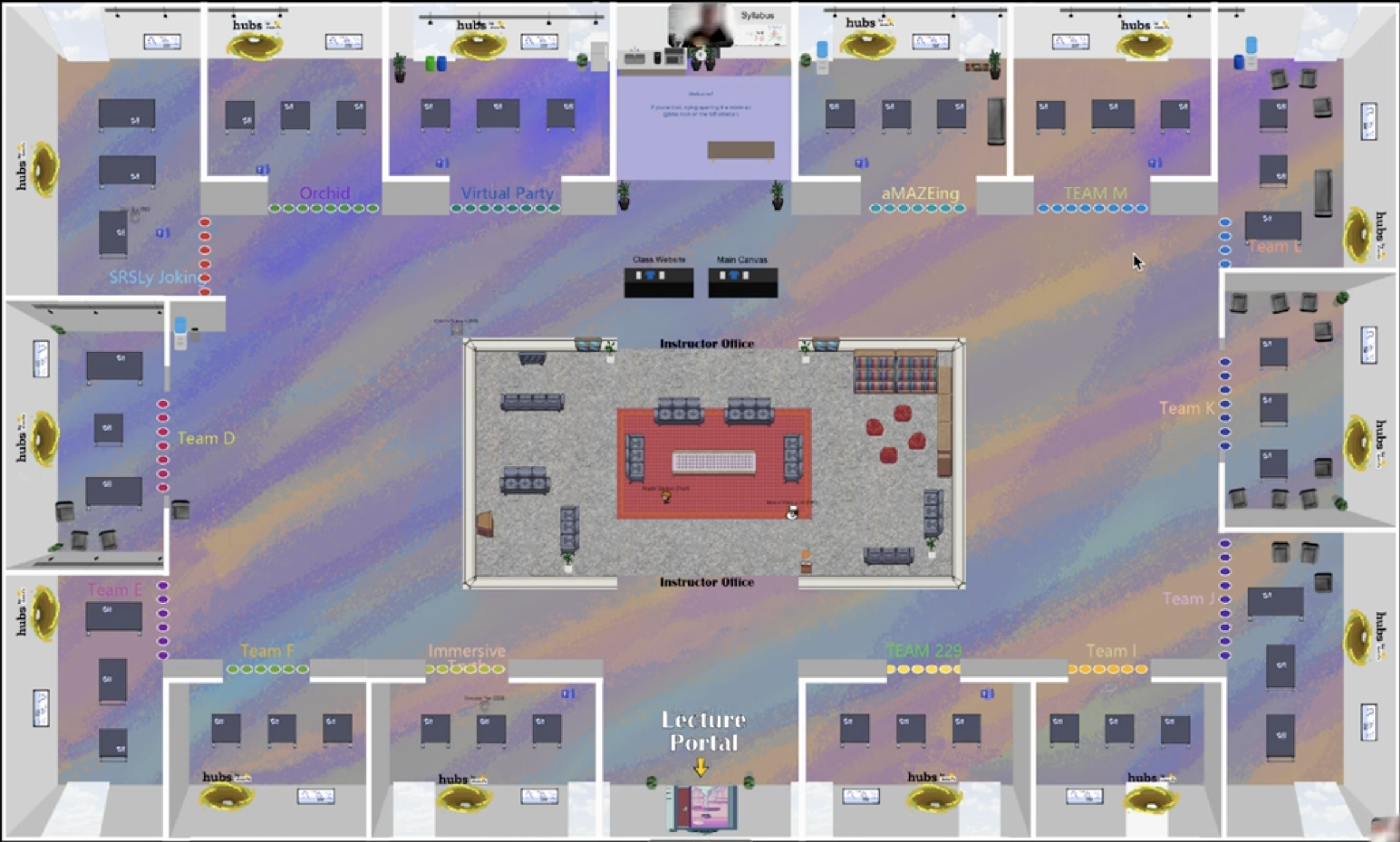 Evaluating Video Conferencing and Desktop Virtual Platforms for Supporting Remote Classroom ActivitiesMatin Yarmand, Ru Wang, Haowei Li, and Nadir WeibelCSCL: International Conference on Computer-Supported Collaborative Learning
Evaluating Video Conferencing and Desktop Virtual Platforms for Supporting Remote Classroom ActivitiesMatin Yarmand, Ru Wang, Haowei Li, and Nadir WeibelCSCL: International Conference on Computer-Supported Collaborative LearningFacilitating effective classroom interactions is especially challenging in online classrooms where participation is entirely remote and subject to tool features. This work explores three learning platforms during a six-week field study at a college class (N=30 students): video conferencing system, video chat with 2D map, and Desktop VR with 3D map. Post-study interviews and survey results revealed that students strongly preferred the plain video conferencing system for lectures due to superior student-content interactions. Meanwhile, they indicated a higher sense of co-presence and social awareness via top-down viewing in 2D map, shape-changing and moving avatars, and spatial audio. This study suggests tailoring features to optimize one type of interaction informed by characteristics of the learning activities.
@article{yarmand2024evaluating, title={Evaluating Video Conferencing and Desktop Virtual Platforms for Supporting Remote Classroom Activities}, author={Yarmand, Matin and Wang, Ru and Li, Haowei and Weibel, Nadir}, booktitle={Proceedings of the 17th International Conference on Computer-Supported Collaborative Learning-CSCL 2024, pp. 407-408}, year={2024}, organization={International Society of the Learning Sciences} } - Patterns of Contouring Mistakes in the Novice Resident: A Qualitative Analysis to Guide Future Educational EffortsMegan Orr, Elizabeth Duran, Borui Wang, Matin Yarmand, Laura D’Souza, Nadir Weibel, Erin Gillespie, James Murphy, and Michael ShererIJROBP: International Journal of Radiation Oncology, Biology, and Physics
Best of ASTRO: Oral Spotlight (Top 9%)
Contouring education is a critical component of radiation oncology residency training, as numerous studies link contour variability to adverse patient outcomes. However, there is no standardized curriculum for contouring, and teaching is currently reliant on a 1:1 apprenticeship model. Identifying common patterns of error in target delineation in residents who are new to a disease site can aid in developing new resources for contouring education. We hypothesized that an interactive online educational platform for learners to practice contouring would reveal the common mistakes made by residents before completing disease-site-specific training.
@article{orr2024patterns, title={Patterns of Contouring Mistakes in the Novice Resident: A Qualitative Analysis to Guide Future Educational Efforts}, author={Orr, ME and Duran, EAM and Wang, B and Yarmand, M and D’Souza, LA and Weibel, N and Gillespie, EF and Murphy, JD and Sherer, M}, journal={International Journal of Radiation Oncology, Biology, Physics}, volume={120}, number={2}, pages={S168}, year={2024}, publisher={Elsevier} } - Acuvr: Enhancing acupuncture training workflow with virtual realityMenghe Zhang, Chen Chen, Matin Yarmand, Anish Rajeshkumar, and Nadir WeibelarXiv: Open Access Archive
Acupuncture is a widely adopted medical practice that involves inserting thin needles into specific points on the body to alleviate pain and treat various health conditions. Current learning practices heavily rely on 2D atlases and practice on peers, which are notably less intuitive and pose risks, particularly in sensitive areas such as the eyes. To address these challenges, we introduce AcuVR, a Virtual Reality (VR) based system designed to add a layer of interactivity and realism. This innovation aims to reduce the risks associated with practicing acupuncture techniques while offering more effective learning strategies. Furthermore, AcuVR incorporates medical imaging and standardized anatomy models, enabling the simulation of customized acupuncture scenarios. This feature represents a significant advancement beyond the limitations of conventional resources such as atlases and textbooks, facilitating a more immersive and personalized learning experience. The evaluation study with eight acupuncture students and practitioners revealed high participant satisfaction and pointed to the effectiveness and potential of AcuVR as a valuable addition to acupuncture training.
@article{zhang2024acuvr, title={Acuvr: Enhancing acupuncture training workflow with virtual reality}, author={Zhang, Menghe and Chen, Chen and Yarmand, Matin and Rajeshkumar, Anish and Weibel, Nadir}, journal={arXiv preprint arXiv:2407.02614}, year={2024} }
2023
- VR for acupuncture? exploring needs and opportunities for acupuncture training and treatment in virtual realityMenghe Zhang, Chen Chen, Matin Yarmand, and Nadir WeibelarXiv: Open Access Archive
Acupuncture is a form of medicine that involves inserting needles into targeted areas of the body and requires knowledge of both Traditional Chinese Medicine (TCM) and Evidence-Based Medicine (EBM). The process of acquiring such knowledge and using it for practical treatment is challenging due to the need for a deep understanding of human anatomy and the ability to apply both TCM and EBM approaches. Visual aids have been introduced to aid in understanding the alignment of acupuncture points with key elements of the human body, and are indispensable tools for both learners and expert acupuncturists. However, they are often not enough to enable effective practice and fail to fully support the learning process. Novel approaches based on immersive visualization and Virtual Reality (VR) have shown promise in many healthcare settings due to their unique advantages in terms of realism and interactions, but it is still unknown whether and how VR can possibly be beneficial to acupuncture training and treatment. Following participatory design protocols such as observations and semi-structured interviews with eight doctors and nine students, we explore the needs and pain points of current acupuncture workflows at the intersection of EBM and TCM in China and the United States. We highlight opportunities for introducing VR in today’s acupuncture training and treatment workflows, and discuss two design approaches that build on 11 specific challenges spanning education, diagnosis, treatment, and communication.
@article{zhang2023vr, title={Vr for acupuncture? exploring needs and opportunities for acupuncture training and treatment in virtual reality}, author={Zhang, Menghe and Chen, Chen and Yarmand, Matin and Weibel, Nadir}, journal={arXiv preprint arXiv:2312.07772}, year={2023} } - Results From a Multi-Institutional Pilot Study of iContour, an Interactive Online Platform with Real-Time Feedback to Improve Contouring Education for Radiation Oncology ResidentsMegan Orr, Anna Dornisch, Elizabeth Duran, Matin Yarmand, Borui Wang, Nadir Weibel, Erin Gillespie, James Murphy, and Michael ShererIJROBP: International Journal of Radiation Oncology, Biology, and Physics
Numerous studies have shown that variability in contouring by radiation oncologists is common and associated with poor clinical outcomes. Contouring is taught via an apprenticeship model during residency with inconsistent results. Currently, there is no standardized contouring curriculum. We hypothesized that an interactive online educational platform for learners to practice contouring and receive real-time visual feedback would be a useful curricular tool.
@article{orr2023results, title={Results From a Multi-Institutional Pilot Study of iContour, an Interactive Online Platform with Real-Time Feedback to Improve Contouring Education for Radiation Oncology Residents}, author={Orr, ME and Dornisch, A and Duran, EAM and Yarmand, M and Wang, B and Weibel, N and Gillespie, EF and Murphy, JD and Sherer, M}, journal={International Journal of Radiation Oncology, Biology, Physics}, volume={117}, number={2}, pages={e536–e537}, year={2023}, publisher={Elsevier} } - Design and Development of a Training and Immediate Feedback Tool to Support Healthcare ApprenticeshipMatin Yarmand, Borui Wang, Chen Chen, Michael Sherer, Larry Hernandez, James Murphy, and Nadir WeibelIn Extended Abstracts of the 2023 CHI Conference on Human Factors in Computing SystemsHamburg, Germany
The apprenticeship model of learning, while valuable in facilitating direct expert supervision, lacks flexibility, timeliness, and feedback diversity, especially in high-stakes healthcare training (e.g., residency programs) where teaching resources are limited. An example healthcare domain is radiation oncology, where residents learn from attending physicians how to contour tumors that require radiotherapy treatment. This paper explores the current apprenticeship strategies in radiation oncology, proposes designs, and develops a prototype to enhance the transfer of knowledge from experts to residents. We introduce three feedback mechanisms comprising visual and text-based elements that outline the degree of overlap with expert contour, specific guidance on over- and under-contoured regions, and long-term toxicity for tumors and nearby organs at risk. The design strategies of this work can inform the design of other learning platforms (in healthcare and beyond) to improve the delivery and access of expert feedback in apprenticeship models.
@inproceedings{yarmand2023design, title={Design and Development of a Training and Immediate Feedback Tool to Support Healthcare Apprenticeship}, author={Yarmand, Matin and Wang, Borui and Chen, Chen and Sherer, Michael and Hernandez, Larry and Murphy, James and Weibel, Nadir}, booktitle={Extended Abstracts of the 2023 CHI Conference on Human Factors in Computing Systems}, pages={1–7}, year={2023} }
2022
- Evaluating Accuracy, Completion Time and Usability of Everyday Touch Devices for ContouringM. Yarmand, M. Sherer, C. Chen, L. Hernandez, N. Weibel, and J. D. MurphyIJROBP: International Journal of Radiation Oncology, Biology, and Physics
Best of ASTRO: Oral Spotlight (Top 9%)
Adaptive radiation therapy aims to account for patients? continuous anatomical changes and update the treatment plans on a daily basis. Despite the potential benefits, technological limitations hinder clinical adoption: daily re-evaluation of contours associated with adaptive planning is time-intensive and difficult to access, and often requires direct provider input which classically involves visualizing and editing contours on immobile desktop computers. This project evaluated the efficacy of everyday touch devices (i.e., tablet and phone) for contouring using a novel cross-platform interface.
@article{yarmand2022evaluating, title={Evaluating Accuracy, Completion Time and Usability of Everyday Touch Devices for Contouring}, author={Yarmand, M and Sherer, M and Chen, C and Hernandez, L and Weibel, N and Murphy, JD}, journal={International Journal of Radiation Oncology, Biology, Physics}, volume={114}, number={3}, pages={S96}, year={2022}, publisher={Elsevier} } - Investigating Input Modality and Task Geometry on Precision-first 3D Drawing in Virtual RealityChen Chen, Matin Yarmand, Zhuoqun Xu, Varun Singh, Yang Zhang, and Nadir WeibelISMAR: IEEE International Symposium on Mixed and Augmented Reality
Accurately drawing non-planar 3D curves in immersive Virtual Reality (VR) is indispensable for many precise 3D tasks. However, due to lack of physical support, limited depth perception, and the non-planar nature of 3D curves, it is challenging to adjust mid-air strokes to achieve high precision. Instead of creating new interaction techniques, we investigated how task geometric shapes and input modalities affect precision-first drawing performance in a within-subject study (n=12) focusing on 3D target tracing in commercially available VR headsets. We found that compared to using bare hands, VR controllers and pens yield nearly 30% of precision gain, and that the tasks with large curvature, forward-backward or left-right orientations perform best. We finally discuss opportunities for designing novel interaction techniques for precise 3D drawing. We believe that our work will benefit future research aiming to create usable toolboxes for precise 3D drawing.
@inproceedings{chen2022investigating, title={Investigating input modality and task geometry on precision-first 3d drawing in virtual reality}, author={Chen, Chen and Yarmand, Matin and Xu, Zhuoqun and Singh, Varun and Zhang, Yang and Weibel, Nadir}, booktitle={2022 IEEE International Symposium on Mixed and Augmented Reality (ISMAR)}, pages={384-393}, year={2022}, organization={IEEE} } - VRContour: Bringing Contour Delineations of Medical Structures Into Virtual RealityChen Chen, Matin Yarmand, Varun Singh, Michael V. Sherer, James D. Murphy, Yang Zhang, and Nadir WeibelISMAR: IEEE International Symposium on Mixed and Augmented Reality
Contouring is an indispensable step in Radiotherapy (RT) treatment planning. However, today’s contouring software is constrained to only work with a 2D display, which is less intuitive and requires high task loads. Virtual Reality (VR) has shown great potential in various specialties of healthcare and health sciences education due to the unique advantages of intuitive and natural interactions in immersive spaces. VR-based radiation oncology integration has also been advocated as a target healthcare application, allowing providers to directly interact with 3D medical structures. We present VRContour and investigate how to effectively bring contouring for radiation oncology into VR. Through an autobiographical iterative design, we defined three design spaces focused on contouring in VR with the support of a tracked tablet and VR stylus, and investigating dimensionality for information consumption and input (either 2D or 2D + 3D). Through a within-subject study (n = 8), we found that visualizations of 3D medical structures significantly increase precision, and reduce mental load, frustration, as well as overall contouring effort. Participants also agreed with the benefits of using such metaphors for learning purposes.
@inproceedings{chen2022vrcontour, title={VRContour: Bringing Contour Delineations of Medical Structures Into Virtual Reality}, author={Chen, Chen and Yarmand, Matin and Singh, Varun and Sherer, Michael V. and Murphy, James D. and Zhang, Yang and Weibel, Nadir}, booktitle={2022 IEEE International Symposium on Mixed and Augmented Reality (ISMAR)}, pages={64-73}, year={2022}, organization={IEEE} } - Exploring Needs and Design Opportunities for Virtual Reality-based Contour Delineations of Medical StructuresChen Chen, Matin Yarmand, Varun Singh, Michael V. Sherer, James D. Murphy, Yang Zhang, and Nadir WeibelEICS: Companion of the ACM Symposium on Engineering Interactive Computing SystemsSophia Antipolis, France
Contour delineation, a critical phase in radiotherapy planning, refers to the process of identifying and segmenting malignant tumors and/or healthy organs from medical images. Today’s contouring software requires oncologists to inspect and contour target of interests by analyzing a stack of planar medical images, which is lengthy, tedious and sometimes error prone. Such design is also in contrast to the stereoscopic nature of medical images. Therefore, it is intuitive to consider bringing contouring into immersive Virtual Reality (VR) space. We present an exploratory study that uses iterative design to understand needs and opportunities to bring contour delineation into an immersive 3D space, such as the one enabled by today’s head-mounted VR displays. We report on the interactions with three medical professionals and three engineering & design experts, and demonstrate the potential for VR–based 3D contouring while studying the benefits of using 3D immersive spaces to augment the process of contour in 2D. Through needs–finding interviews and co–design workshops, we evaluated our initial iterations and proof–of–concept prototypes. We believe that our preliminary findings will benefit researchers and practitioners who are attempting to bring today’s contour delineation processes into an immersive 3D space.
@inproceedings{chen2022exploring, title={Exploring Needs and Design Opportunities for Virtual Reality-based Contour Delineations of Medical Structures}, author={Chen, Chen and Yarmand, Matin and Singh, Varun and Sherer, Michael V. and Murphy, James D. and Zhang, Yang and Weibel, Nadir}, booktitle={Companion of the 2022 ACM SIGCHI Symposium on Engineering Interactive Computing Systems}, pages={19-25}, year={2022} } - AI-Moderated Decision-Making: Capturing and Balancing Anchoring Bias in Sequential Decision TasksJessica Maria Echterhoff, Matin Yarmand, and Julian McAuleyCHI: ACM Conference on Human Factors in Computing SystemsNew Orleans, LA, USA
Decision-making involves biases from past experiences, which are difficult to perceive and eliminate. We investigate a specific type of anchoring bias, in which decision-makers are anchored by their own recent decisions, e.g. a college admission officer sequentially reviewing students. We propose an algorithm that identifies existing anchored decisions, reduces sequential dependencies to previous decisions, and mitigates decision inaccuracies post-hoc with 2% increased agreement to ground-truth on a large-scale college admission decision data set. A crowd-sourced study validates this algorithm on product preferences (5% increased agreement). To avoid biased decisions ex-ante, we propose a procedure that presents instances in an order that reduces anchoring bias in real-time. Tested in another crowd-sourced study, it reduces bias and increases agreement to ground-truth by 7%. Our work reinforces individuals with similar characteristics to be treated similarly, independent of when they were reviewed in the decision-making process.
@inproceedings{echterhoff2022ai, title={AI-Moderated Decision-Making: Capturing and Balancing Anchoring Bias in Sequential Decision Tasks}, author={Echterhoff, Jessica Maria and Yarmand, Matin and McAuley, Julian}, booktitle={Proceedings of the 2022 CHI Conference on Human Factors in Computing Systems}, pages={1–9}, year={2022} }
2021
-
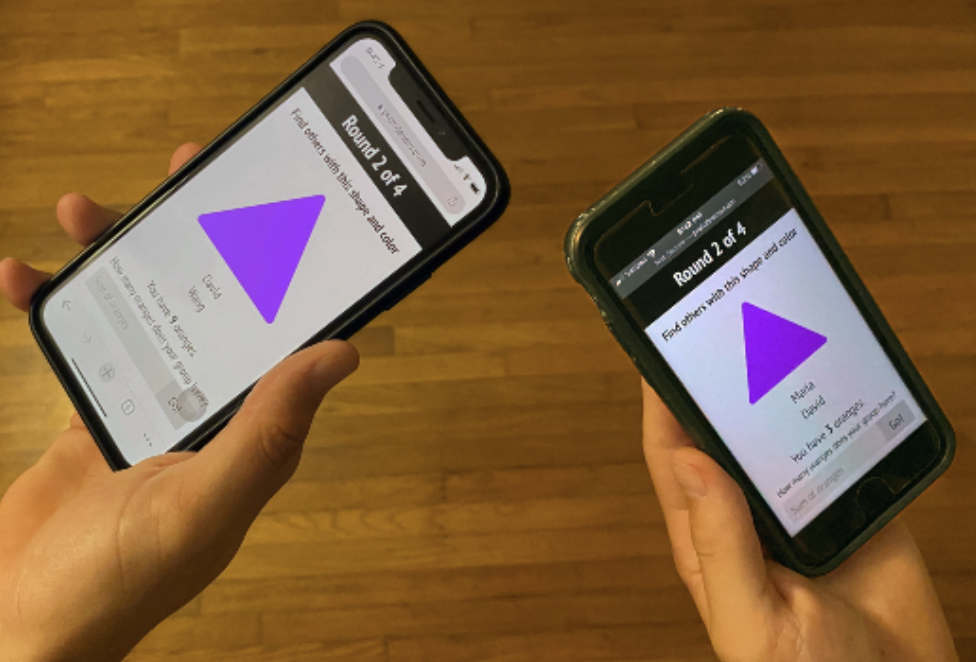 ProtoTeams: Supporting Team Dating in Co-Located SettingsGustavo Umbelino, Matin Yarmand, Samuel Blake, Vivian Ta, Amy Luo, and Steven DowCSCW: ACM Conference on Computer-Supported Cooperative Work
ProtoTeams: Supporting Team Dating in Co-Located SettingsGustavo Umbelino, Matin Yarmand, Samuel Blake, Vivian Ta, Amy Luo, and Steven DowCSCW: ACM Conference on Computer-Supported Cooperative WorkTeam dating, or small-group interactions, can expose people to diverse perspectives and inform the potential for longer-term collaboration. However, rapidly configuring groups and facilitating interactions among strangers can be difficult, especially in co-located settings. We present ProtoTeams, a system that leverages personal mobile devices to support rapid group formation, to facilitate group activities, and to collect data about the potential for future collaboration. We report on a field study where 406 students in eight different project-based classes used ProtoTeams to interact with classmates through multiple rounds of brief discussion activities before selecting teammates for a term project. We found that the system enables groups to form in about one minute, allows for meaningful interactions with a diverse range of peers, and can significantly influence subsequent teammate selection. We discuss design implications and challenges for in-person team dating in classrooms and other contexts.
@inproceedings{umbelino2021prototeams, title={ProtoTeams: Supporting Team Dating in Co-Located Settings}, author={Umbelino, Gustavo and Yarmand, Matin and Blake, Samuel and Ta, Vivian and Luo, Amy and Dow, Steven P.}, booktitle={Proceedings of the 2021 CHI Conference on Human Factors in Computing Systems}, pages={1–27}, year={2021} } -
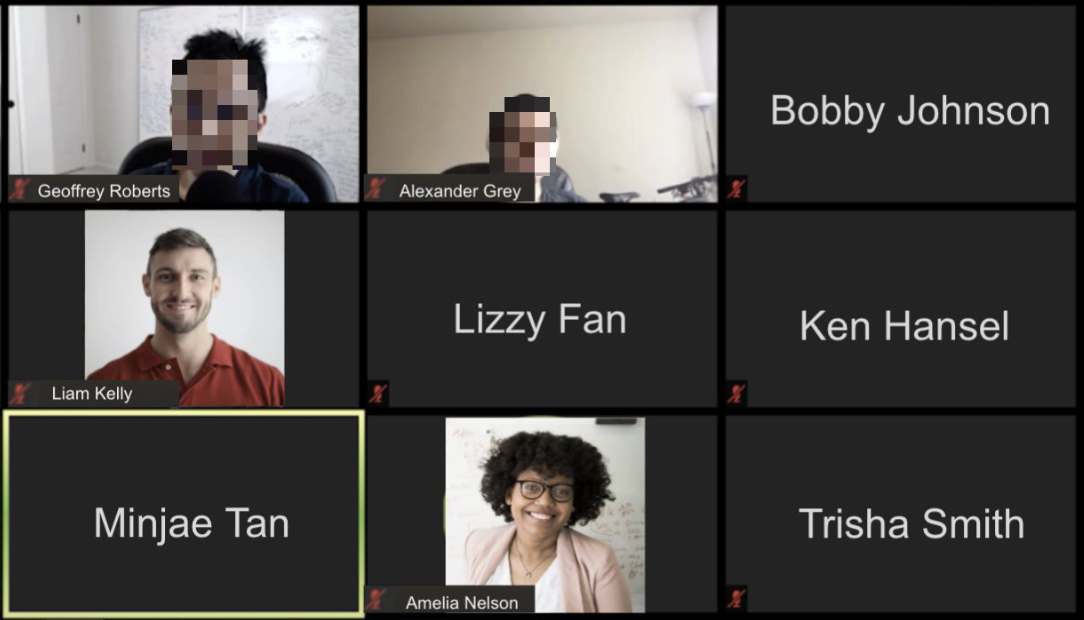 “It Feels Like I am Talking into a Void”: Understanding Interaction Gaps in Synchronous Online ClassroomsMatin Yarmand, Jaemarie Solyst, Scott Klemmer, and Nadir WeibelCHI: ACM Conference on Human Factors in Computing Systems
“It Feels Like I am Talking into a Void”: Understanding Interaction Gaps in Synchronous Online ClassroomsMatin Yarmand, Jaemarie Solyst, Scott Klemmer, and Nadir WeibelCHI: ACM Conference on Human Factors in Computing SystemsThis paper investigates in-class interactions in synchronous online classrooms when the choice of modality is discretionary, such that students choose when and if they turn on their cameras and microphones. Instructor interviews (N = 7) revealed that most students preferred not to share videos and verbally participate. This hindered instructors’ ability to read their classrooms and make deeper connections with students. Survey results (N = 102) suggested that students felt a lacking sense of community in online vs. in-person lectures. Some students felt uncomfortable broadcasting their appearances to everyone in the class, and some were unaware of the benefits for instructors. Most students favored using the text chat to participate. Considering the needs of both instructors and students, we propose recommendations to mitigate the loss of classroom interactions by collecting and presenting less invasive social cues in an aggregated format, and incorporating opportunities for informal exchanges and individual control to spark peer bonding.
@inproceedings{yarmand2021feels, title={“It feels like I am talking into a void”: Understanding interaction gaps in synchronous online classrooms}, author={Yarmand, Matin and Solyst, Jaemarie and Klemmer, Scott and Weibel, Nadir}, booktitle={Proceedings of the 2021 CHI conference on human factors in computing systems}, pages={1–9}, year={2021} } - Facilitating Remote Design Thinking Workshops in Healthcare: the Case of Contouring in Radiation OncologyMatin Yarmand, Chen Chen, Danilo Gasques, James D. Murphy, and Nadir WeibelCHI EA: Extended Abstracts of the CHI Conference on Human Factors in Computing SystemsYokohama, Japan
Co-location matters, especially when running collaborative design thinking workshops. What if participation cannot occur in person? How can we conduct these workshops remotely? Based on guidelines of the Wallet project that provides a framework for in-person design thinking workshops, we present the first experiences of facilitating 2 remote design workshops with radiation oncology faculty and residents. We report the logistics and tool support decisions for the first workshop, evaluate and adjust our approach for the second workshop, and present the 3 lessons learned: incorporating schedule flexibility, prioritizing technology familiarity, and integrating communication channels.
@inproceedings{yarmand2021facilitating, title={Facilitating Remote Design Thinking Workshops in Healthcare: the Case of Contouring in Radiation Oncology}, author={Yarmand, Matin and Chen, Chen and Gasques, Danilo and Murphy, James D. and Weibel, Nadir}, booktitle={Extended Abstracts of the 2021 CHI Conference on Human Factors in Computing Systems}, pages={1–5}, year={2021} } - Adjacent Display of Relevant Discussion Helps Resolve ConfusionMatin Yarmand, Srishti Palani, and Scott KlemmerCSCW: ACM Conference on Computer-Supported Cooperative Work
Discussion fora of instructional videos contain previously-discussed questions and answers. These video comments can resolve many points of confusion for learners. However, finding relevant content in a separated discussion forum is challenging and disruptive to learning flow. This paper introduces Adjacent Display of Relevant Discussion (ADRD): it displays threaded comments in a panel adjacent to the video and dynamically updates the content of the panel based on the time of the video. In a between-subjects lab study (n=20), ADRD helped participants resolve confusion points, skim and read comments, and encouraged video interaction.
@inproceedings{yarmand2021adjacent, title={Adjacent Display of Relevant Discussion Helps Resolve Confusion}, author={Yarmand, Matin and Palani, Srishti and Klemmer, Scott}, booktitle={Proceedings of the 2021 CHI Conference on Human Factors in Computing Systems}, pages={1–11}, year={2021} }
2019
-
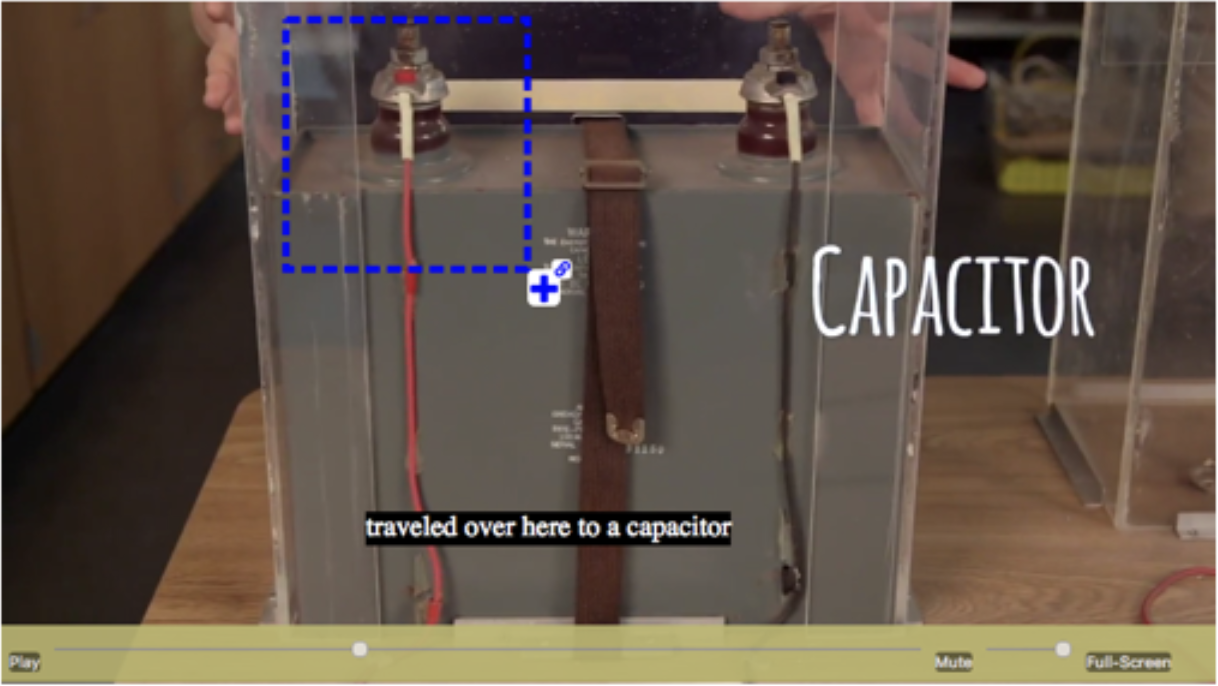 "Can you believe [1:21]?!": Content and Time-Based Reference Patterns in Video CommentsMatin Yarmand, Dongwook Yoon, Samuel Dodson, Ido Roll, and Sidney S. FelsCHI: ACM Conference on Human Factors in Computing Systems
"Can you believe [1:21]?!": Content and Time-Based Reference Patterns in Video CommentsMatin Yarmand, Dongwook Yoon, Samuel Dodson, Ido Roll, and Sidney S. FelsCHI: ACM Conference on Human Factors in Computing SystemsBest of CHI: Honorable Mention (Top 5%)
As videos become increasingly ubiquitous, so is video-based commenting. To contextualize comments, people often reference specific audio/visual content within video. However, the literature falls short of explaining the types of video content people refer to, how they establish references and identify referents, how video characteristics (e.g., genre) impact referencing behaviors, and how references impact social engagement. We present a taxonomy for classifying video references by referent type and temporal specificity. Using our taxonomy, we analyzed 2.5K references with quotations and timestamps collected from public YouTube comments. We found: 1) people reference intervals of video more frequently than time-points, 2) visual entities are referenced more often than sounds, and 3) comments with quotes are more likely to receive replies but not more "likes". We discuss the need for in-situ dereferencing user interfaces, illustrate design concepts for typed referencing features, and provide a dataset for future studies.
@inproceedings{yarmand2019can, title={"Can you believe [1: 21]?!": Content and Time-Based Reference Patterns in Video Comments}, author={Yarmand, Matin and Yoon, Dongwook and Dodson, Samuel and Roll, Ido and Fels, Sidney S}, booktitle={Proceedings of the 2019 CHI Conference on Human Factors in Computing Systems}, pages={1–12}, year={2019} }